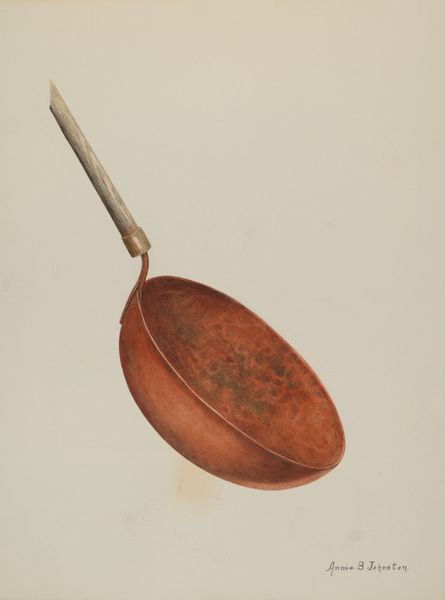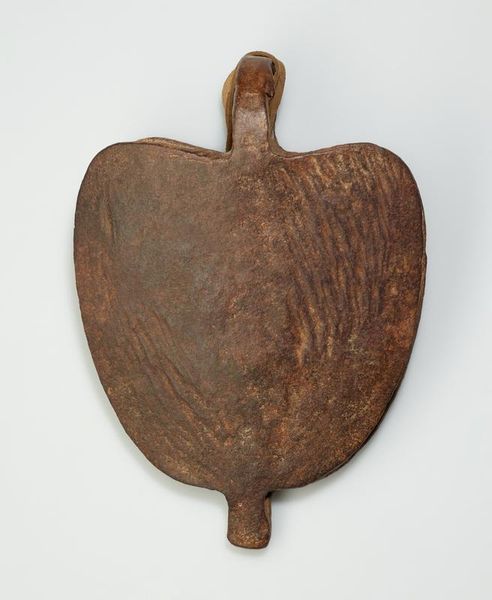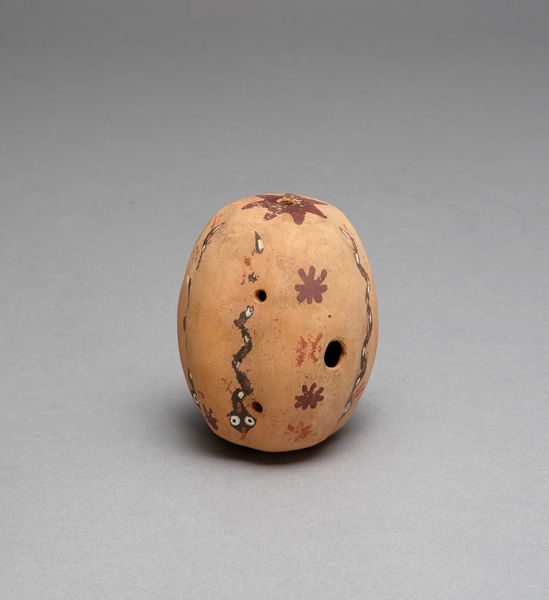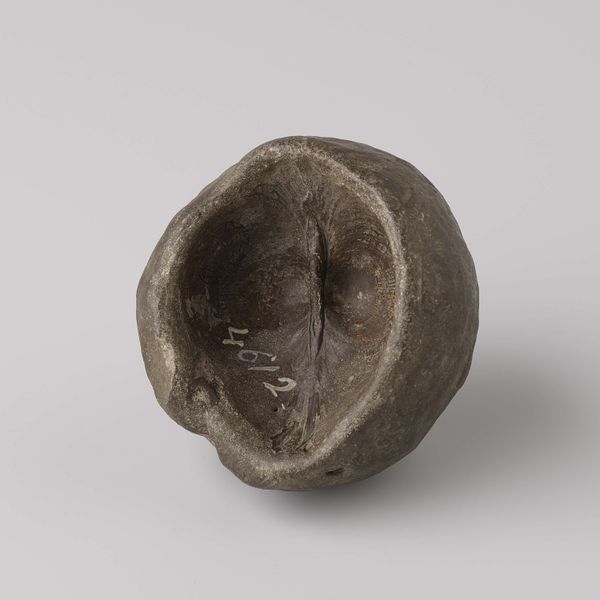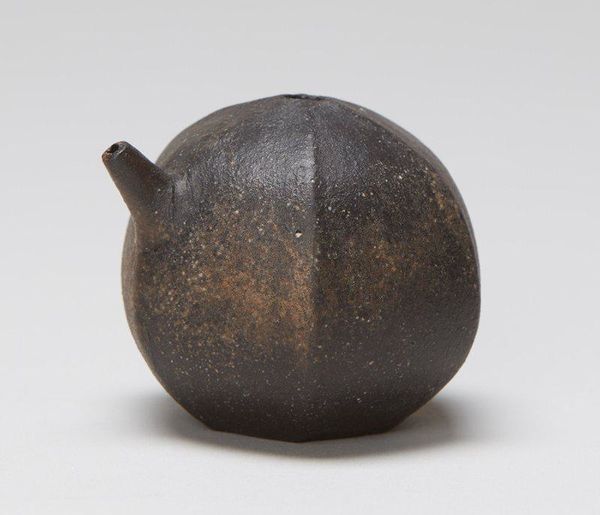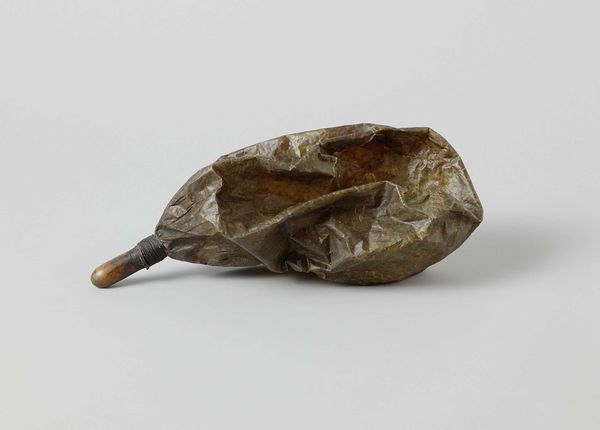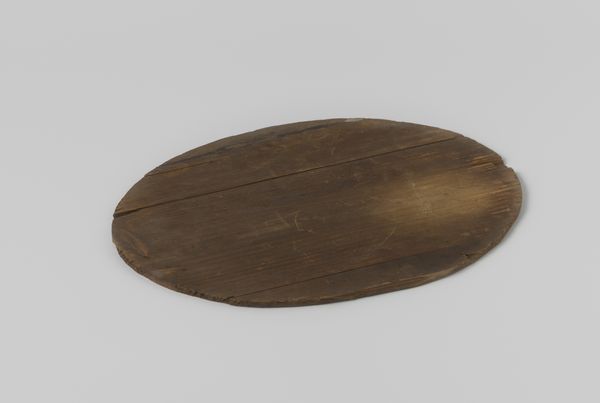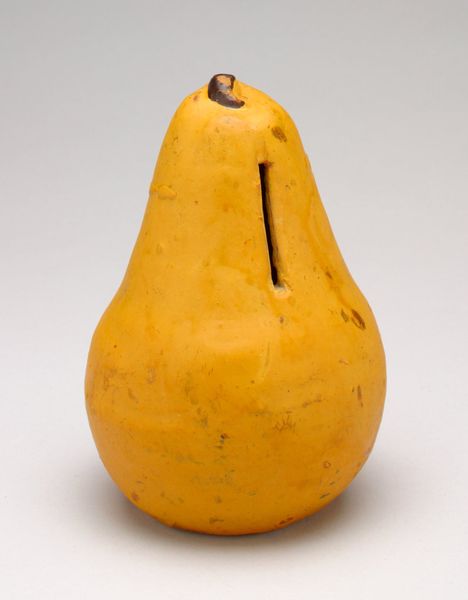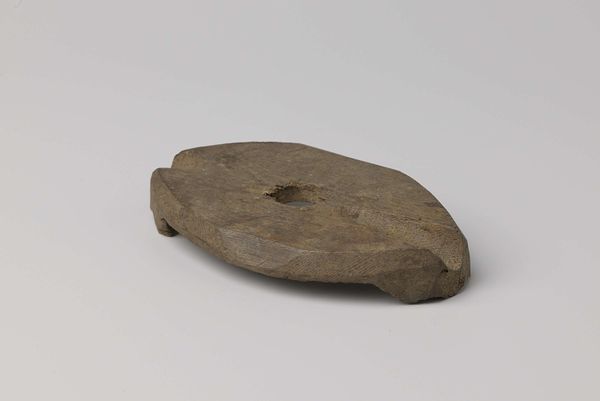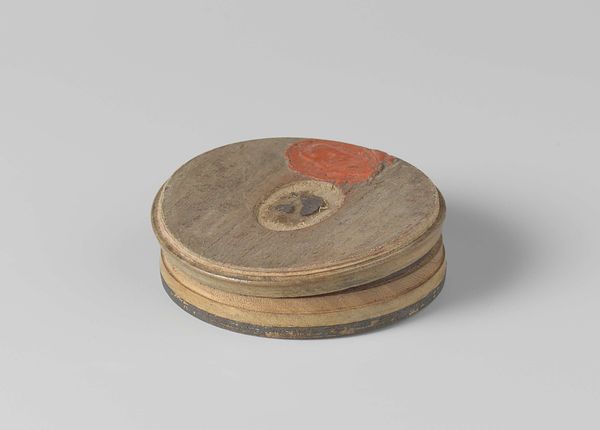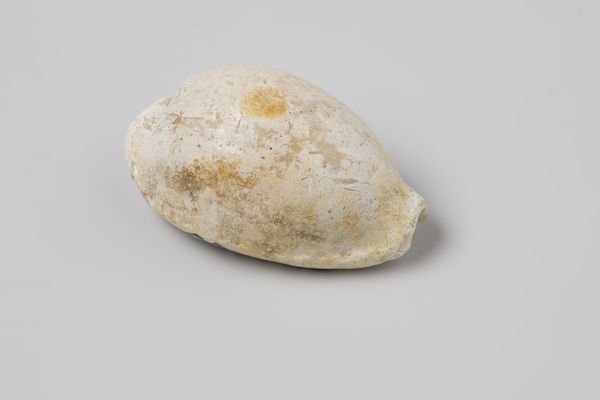
wood
#
stoneware
#
ceramic
#
wood
#
decorative-art
Dimensions: height 9.2 cm, width 7 cm, depth 1.8 cm
Copyright: Rijks Museum: Open Domain
Editor: This is "Red Wooden Box," estimated to be made between 1775 and 1825. It’s a small, somewhat weathered wooden box, a deep red color, almost teardrop-shaped. There’s a simplicity to it, a quiet functionality. How might this seemingly ordinary object have been viewed in its time? Curator: Considering its historical context is key. Such a box wouldn't exist in isolation. Who owned it, how was it displayed, and what role did it play in their life? Was it a personal item, tucked away, or a display piece signifying status? Red, particularly in the 18th century, could signify wealth or importance depending on the social sphere. Think about the global trade routes, what kind of wood was available, how pigments were obtained. These details aren't just about aesthetics. Editor: So the red color itself is more than just a color. Did the rise of a middle class at the time give these kinds of objects a wider audience? Curator: Precisely. Access to goods previously limited to the elite trickled down. This changes the object’s cultural function. It is an item affordable for many, that would change the object. Would you agree that changes of distribution and material availability significantly impacted the cultural perception of objects like these? Editor: I think so. It seems to democratize…taste. It also gives more of us a window into the daily life of past generations. Curator: Exactly. Even in its simple form, the box reflects socio-economic shifts of its time and the growing public role of decorative arts. This one small object helps us see and reflect. Editor: It’s incredible how much can be gleaned from something seemingly so simple. I will consider materials, manufacturing processes, and possible markets when assessing decorative art in the future.
Comments
No comments
Be the first to comment and join the conversation on the ultimate creative platform.
